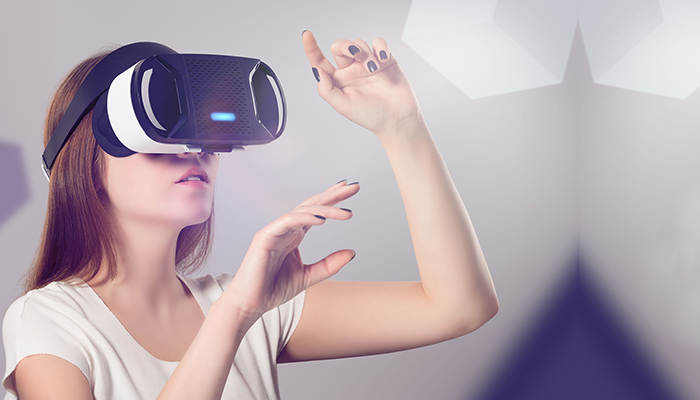0905
Virtual Reality (VR) – Where will we stand in 10 Years?
By: Digital Dividend | Comments Off on Virtual Reality (VR) – Where will we stand in 10 Years? | View: 7895
Today, Virtual Reality has become the next big thing in the world of technology.
Virtual reality refers to an artificially created environment which a human user views and interacts with by means of a virtual reality device or headset.
Proponents and experts say that virtual reality is here to stay and that its future is bright. Already, a great number of investors and businesses have significantly invested in this area. Giants such as Facebook, Google, Sony and others have all come up with their own technologies in a virtual reality arms race of sorts.
Augmented Reality (AR) is a similar concept. The AR device acts on the natural environment and transforms it into an augmented reality for the viewer. In the case of augmented reality, the environment and interactions are triggered when viewed from a headset. In an augmented-reality based environment, the actions & interactions are embedded within an object; so, when you stare or gaze at a particular object, an action is triggered, whereby you can have an artificially created three-dimensional experience.
Like any other great technological advancement, virtual reality and augmented reality have various use cases and are manifesting themselves in our daily lives. For example, the education sector has been positively influenced by the use of augmented reality. Many schools are now using applications like Elements 4D and Aurasma, enabling teachers and learners to interact with drawings (or posters) and objects to create a rich and multimodal learning experience. Applications such as these provide teachers and students with numerous possibilities to enrich the learning process, taking education to another level.
Likewise, the implications and applications of AR and VR are significant in a medical setting. For example, an experiment was conducted by researchers from University College London in collaboration with the University of Barcelona whereby participants were equipped with VR headsets and body sensors to enter a virtual clinical setting.
Upon entering the virtual environment, the participants saw a virtual patient (a minor). The participants were asked to engage in an emotional and comforting discourse with their virtual patient, and they observed how that patient warmly responded to their words and gestures. Afterwards, the roles switched; now the participant found themselves in the place of the patient, but the role of the psychologist was still played by that virtually created image or avatar of themselves. All this could be foreshadowing a radical shift in how psychologists and psychiatrists pursue training and learning.
To sum it all up, be it the world of gaming, interaction on social media, treatment within a clinical setting, or in an educational setting, VR has created new possibilities for each of these domains. It is amazing how we can transform and enhance our most significant and even the littlest experiences using this modern technology. Considering the advancements in the area of virtual reality, we can rest assured that its scope is going to be dynamic and diversified within the next ten years. At Digital Dividend, we are extremely excited to see how the future unfolds. Brace yourselves, folks!
Top Reasons to Migrate to Microsoft SharePoint



0 Comment